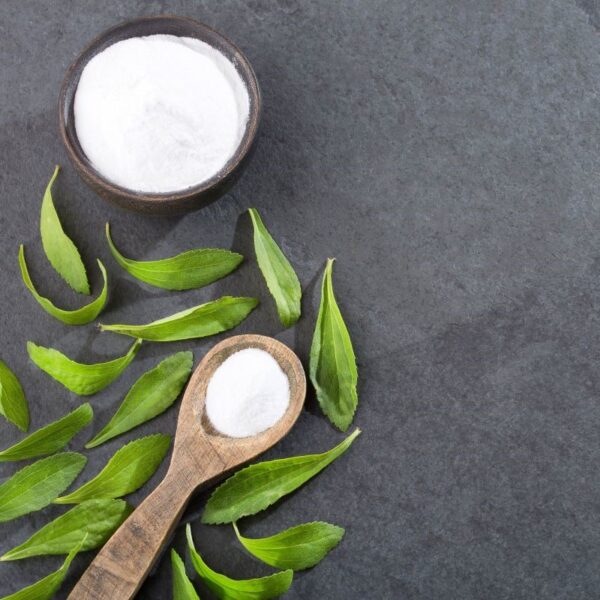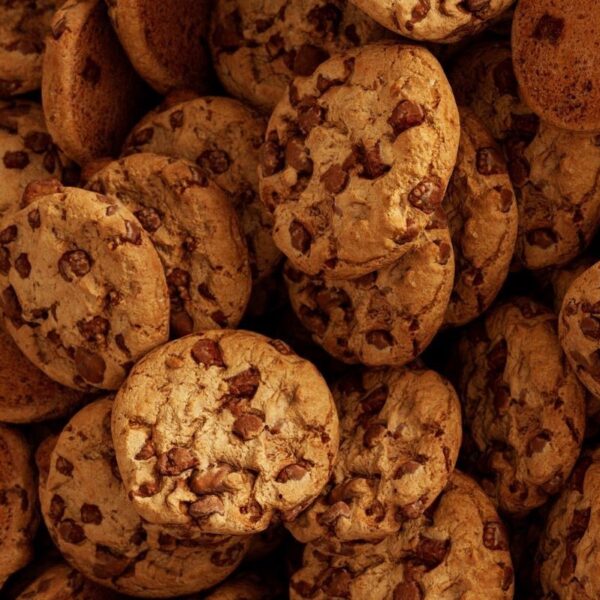Bovine gelatin is derived from cows, buffalo, and oxen’s skin, bones, and connective tissue. Gelatin is a multifunctional biopolymer widely used as an ingredient in the food industry. It enhances properties such as elasticity, consistency, and stability of food products. Gelatin is also a gelling agent in foods such as jellies, cakes, aspics, marshmallows, yogurt, ice cream, and sweets.
What is Bovine Gelatin?
Bovine gelatin is a protein derived from the collagen of cattle. It consists of a mixture of peptides and proteins produced by the partial hydrolysis of collagen. Bovine gelatin is used as a stabilizer, thickener, and texturizer in various food products.
Chemical structure of gelatin. Source: Science Direct
How is Bovine Gelatin Produced?
Gelatin is formed during the cooking of meat, particularly in low-quality cuts that are high in collagen. The most common method of obtaining gelatin involves alkali processing, which results in Type B gelatin. The bone or hide meal is degreased and cooked at 180-250°F. It is centrifuged, dried, and demineralized using HCl to get ossein. Ossein is then treated with alkali extensively to remove any impurities.
Enzymatic methods to produce gelatin continue to evolve and have succeeded in demineralizing collagen from ossein with improved predictability of quality and yield. Genetically engineered sources of collagen and gelatin are also being researched.
Applications in the Food & Beverage Industry
Gelatine performs a variety of functions in food products. It acts as a stabilizer, thickening agent, fining agent, and texturizer, among others.
| Function | Applications |
| Gelling Agent | Jams, Jellies, Candies |
| Binder | Jams, Jellies, Candies, Food Coatings, Capsules, Gums |
| Stabilizer | Jams, Jellies, Candies, Yogurt, Ice Cream, Cream Cheese, Cottage Cheese, Soups, Instant Gravies, Sauces, Fruit Juices |
| Viscosity Modifier | Jams, Jellies, Candies, Yogurt, Ice Cream, Cream Cheese, Cottage Cheese, Fruit Juices |
| Texturizing Agent | Jams, Jellies, Candies, Fruit-Based Desserts, Milk-Based Desserts |
| Thickener | Yogurt, Ice Cream, Cream Cheese, Cottage Cheese, Fruit-Based Desserts, Milk Based-Desserts |
| Coating Agent, Adhesive, Binder | Food Coatings, Capsules, Gums |
| Fining Agent | Wine, Beer |
Product Examples
| Category | Examples |
| Confectionery | Jams, Jellies, Candies |
| Dairy | Yogurt, Ice Cream, Cream Cheese, Cottage Cheese |
| Convenience | Soups, Instant Gravies, Sauces |
| Desserts | Fruit-Based desserts, Milk-Based Desserts |
| Non-Alcoholic Beverages | Fruit Juices |
| Alcoholic Beverages | Wine, Beer |
| Others | Food Coatings, Capsules, Gums |
Properties of Bovine Gelatin
| Physical Form | Solid, Powder |
| Color | Colorless; sometimes turbid |
| Odor | Odorless; can carry bouillon-like odor |
| Storage Temperature & Conditions | Store between 35–65% RH and 15–25°C |
| Molecular Weight | 15 to 400 kDa |
| Gelling Temperature | 22.5°C |
| Melting Point | 25°C-40°C |
| Specific Gravity | 1.3-1.4 |
| Solubility | Water, Polycyclic Alcohols, Ether, Benzene, Acetic Acid |
| Claims (*Product Specific) | Natural*, Halal*, Kosher* — Bovine gelatin can be Halal & Kosher, unlike porcine gelatin. |
Typical Formulations
Soft Chewable
Here is an example of a soft chewable product formulation table with bovine gelatin along with the % weight of ingredients:
| Ingredient | Composition % |
| Bovine gelatin 150 bloom | 19 |
| Glycerin | 24 |
| Water | 33.4 |
| Modified potato starch (Penbind 100 ®) | 23 |
| Sodium starch glycolate | 0.5 |
| Natural and artificial flavors | As required |
| Lemon oil | 0.1 |
| Natural and artificial colors | As required |
Source: Google Patents
Ice Cream
Here is an example of an ice cream formulation table with bovine gelatin along with the % weight of ingredients:
| Ingredient | Composition % |
| Skimmed Milk | 8.5 |
| Sugar | 15 |
| Bovine Gelatin | 0.3 |
| Ovalette | 0.1 |
| Water | 45.54 |
| Whipping Cream | 30.56 |
Source: Journal of Food and Pharmaceutical Sciences
Nutritional Properties of Bovine Gelatin
On a dry-weight basis, gelatin consists of 98 to 99% protein. Peptide bonds join coils of amino acids together. Gelatin is not a nutritionally complete protein. It contains no tryptophan and is deficient in isoleucine, threonine, and methionine. It is also deficient in other sulfur-containing amino acids. Gly-Pro-Hyp is the predominant amino acid sequence in gelatin. The amino acid composition of gelatin is as follows:
| Amino acids (AA) | Amino Acid g/100 g Gelatine | |
| Cow’s bone Gelatin | Bovine hide Gelatin | |
| Aspartic acid | 11.47 | 7.46 |
| Threonine | 3.15 | 2.11 |
| Serine | 2.94 | 3.62 |
| Glutamic acid | 15.56 | 11.28 |
| Proline | 9.4 | 12.52 |
| Glycine | 17.24 | 32.63 |
| Alanine | 6.67 | 10.88 |
| Valine | 2.09 | 2.18 |
| Methionine | 0.78 | 0.42 |
| Isoleucine | 1.15 | 1.44 |
| Leucine | 2.27 | 3 |
| Tyrosine | 0.66 | 0.4 |
| Phenylanine | 3.15 | 1.99 |
| Lysine | 3.78 | 3.46 |
| Histidine | 0.67 | 0.77 |
| Arginine | 2.38 | 9.9 |
Source: Asian Journal of Chemistry
Types of Gelatin
In addition to bovine sources, gelatin can be obtained from porcine (pig) and marine (fish) sources. These three types of gelatins are sold commercially. The properties of gelatins from different sources differ slightly, making some more suited to certain applications, as illustrated in the table below.
| Property | Observations |
| pH | Porcine skin gelatin obtained using the alkaline extraction method (Type A) has a higher pH (~7.5) compared to bovine gelatin (~5.02) extracted using the acid extraction method (Type A). Fish gelatin also has a lower pH value (~4.1-4.4). |
| Melting Point | Mammalian gelatins have significantly higher melting points (32.2–32.6 °C) than fish gelatins. |
| Viscosity | Porcine skin gelatin has the highest viscosity compared to the other two. |
| Setting Point | Bovine and porcine gelatins have higher gelling and melting points than most fish gelatins. |
| Foam Stability | The foam stability of mammalian gelatin is significantly higher than fish gelatin. |
| Water Binding Capacity | Mammalian gelatin has a higher water binding capacity than fish gelatin. |
| Fat Binding Capacity | Fish gelatin obtained from specific varieties of fish (ex. Rohu) has the highest fat binding capacity compared to mammalian gelatin. |
| Sensory Properties | The color of cow bone gelatin is slightly darker than other common gelatins, and the solution is more turbid. Odor can be present in all types of gelatin, but it can be removed with additional steps in processing. |
Source: NIH
Properties Affecting the Choice of Gelatin
| Property | Principle | Effect |
| Viscosity | Viscosity is partially controlled by molecular weight and molecular size distribution. | Viscosity affects the thickening properties of gelatin as well as the texture and mouthfeel of the final product. |
| Bloom Value | It reflects the average molecular weight of gelatin. | Foaming ability affects the foaming and stabilization properties of gelatin and the fat-binding properties. |
| Melting Point | Sensory properties affect consumer acceptability. Gelatin may have a foul odor which can be unacceptable in specific applications. | Melting point affects the mouthfeel. Gelatin confections with lower melting points have the “melt-in-mouth” experience. It also positively affects the flavor release characteristics. |
| Setting Point | The setting temperature of gelatin has also been found to correlate with the imino acid content. | The high gelling and melting points expand the range of gelatin application. |
| Foaming Ability | The hydrophobic areas on the peptide chain give gelatin its emulsifying and foaming properties. The aggregation of proteins interfering with interactions between the protein and water needed for foam formation can affect foaming ability. | The melting temperature of gelatin has been found to correlate with the proportion of the amino acids proline and hydroxyproline. |
| Water Binding Capacity | Water binding capacity depends on the degree of exposure of the hydrophilic residues inside gelatin. | Water binding capacity affects the gelling properties and texturizing properties of gelatin. |
| Fat Binding Capacity | Fat binding capacity depends on the degree of exposure of the hydrophobic residues inside gelatin. | Fat binding capacity affects the mouthfeel. |
| Sensory Properties | Sensory properties depend on the methods used for extraction. Deodorization is achievable in gelatin. | Foaming ability affects gelatin’s foaming and stabilization properties and fat-binding properties. |
Effects on Functional Properties of Food Products
The properties of gelatins affect the functional properties of foods they are added to. Rheological properties, stability, and clarifying properties all have various effects.
Rheological Properties
The primary property of gelatin is its ability to form thermo-reversible gels. The firmness of the gel depends on the bloom value and the concentration of the gelatin being used. Handling factors can also have a substantial impact, including the concentration of the gelatin solution, the gelling time and temperature, thermal pretreatment and duration, and the pH value and salt content.
The following table describes each parameter’s effect on the gelatin solution’s viscosity.
| Parameter | Effect on Viscosity of Gelatin Solution |
| Age of Solution | Maximum viscosity has been observed at pH 3.0 to 3.5. On the alkaline side of the iso-electric point, the corresponding viscosities remain constant until the hydroxyl ion concentration reaches the point where it can catalyze gelatin hydrolysis. |
| Concentration of Gelatin | For low concentrations of somewhat acidic solutions, the viscosity is approximately a linear function of concentration. On the other hand, the viscosity increases rapidly with time in higher concentrations. |
| Hydrogen Ion Concentration (pH) | Maximum viscosity has been observed at pH 3.0 to 3.5. On the alkaline side of the iso-electric point, the corresponding viscosities remain constant until the concentration of hydroxyl ion reaches the point where it can catalyze gelatin hydrolysis. |
Source: ACS
Stability
As a surfactant (or “surface active agent”), gelatin can decrease the surface tension of water. This makes it an excellent whipping and emulsifying agent. Gelatin can stabilize emulsions by improving the system’s viscosity and thus preventing coalescence. Due to its surface-active properties, it can act as an emulsifier in oil-in-water emulsions.
Also, changing the pH of the gelatin solution affects the emulsifying properties of the gelatin in a manner closely related to the changes of surface tension and viscosity of gelatin solutions with pH.
Fining and Clarification
Gelatin and isinglass are used as fining agents in beer and wine. Gelatin works by the same mechanism as isinglass. However, it is less effective as a fining agent because of its amorphous structure, which binds less tightly to yeast than the highly ordered helical structure of isinglass. On the other hand, isinglass is less active toward condensed tannins compared to gelatin. So, gelatin can be used for the reduction of condensed tannins.
Bovine Gelatin Formulation Considerations
| Physical Forms | Powder |
| Stability | pH: Can undergo hydrolysis at higher alkaline pH Temperature: Strength rapidly declines over 100°C and degrades by 340°C. |
| Sensory Attributes | Odorless, colorless, no significant flavor. (Variants can have color, taste, and odor, depending on the processing conditions) |
| Dosage | 0.5-20%, depending on the application |
Safety & Regulatory Considerations
| FDA Information | The EU has prescribed requirements for gelatin. It is necessary to ensure that raw materials for producing gelatin for human consumption come from sources that meet the public and animal health requirements in Union legislation. |
| EU Information | The EU has prescribed requirements for gelatin. It is necessary to ensure that raw materials for the production of gelatin for human consumption come from sources that meet the public and animal health requirements laid down in Union legislation. |
Health Effects of Bovine Gelatin
Bovine gelatin has been found to have several beneficial health effects, as described below.
Skin Health: Due to its low molecular weight, hydrolyzed collagen is highly digestible, absorbed, and distributed in the different tissues of the human body. It has been shown to stimulate fibroblasts’ proliferation and motility, increase collagen fibers’ density and diameter, increase hyaluronic acid production, and activate protection against UVA radiation.
Anti-inflammatory: Bovine gelatin peptides have been found to possess health-promoting effects by regulating chronic diseases such as arthritis and hypertension. It affects the inflammatory cytokines and gut microbiota compositions.
Healthy Intestines: The proteins in gelatin can help support the intestinal wall, including building the protective mucus lining in the intestines. It can also help to protect the intestinal barrier from damage and prevent leaky gut.
Helps Improve Hypoglycemia and Obesity: Gelatin meal induces a rise in plasma GLP-1 followed by an increase in serum levels of insulin. These findings can be applied to maximize satiety in obese patients to improve adherence to calorie-controlled diets and provide better control of diabetic patients.
Joint and Bone Health: Dietary gelatin hydrolysates from mammals were reported to improve bone mineral density (BMD) in some animal models.
Safety & Toxicity of Bovine Gelatin
The quality of gelatin in food may depend on the animal’s health and the method of processing. Some are concerns consuming gelatin may increase the risks associated with animal-borne diseases, such as bovine spongiform encephalopathy, also known as mad cow disease. However, the Food and Drug Administration (FDA) has provided definitions for prohibited cattle materials for human food which can carry the risk of contamination.
Identification Numbers
| CAS Number | 9000-70-8 |
| EC Number | 232-554-6 |
Fun Facts About Bovine Gelatin
- Bovine gelatin contains 18 amino acids essential to cell growth and maintenance.
- Gelatin contains lysine, which plays a role in muscle and bone health. It helps the body absorb calcium.
Additional Resources
- IFT Journals – Gelling and Foaming Properties of Gelatin and the Relationship with Food Structure: A Review
- SpringerLink – Applications of Gelatin as a Food Packaging Material: A Review
- ChemicalBook – Gelatin
- GELITA – Creating Stable Foams and Emulsions with Gelatin
- NCBI – A Comprehensive Review on the Gelatin-Based Antimicrobial Edible Films
- USDA AMS – Review of the Gelatin Market – Fish Gelatin
- USDA FoodData Central – Nutrient Information for Gelatin










